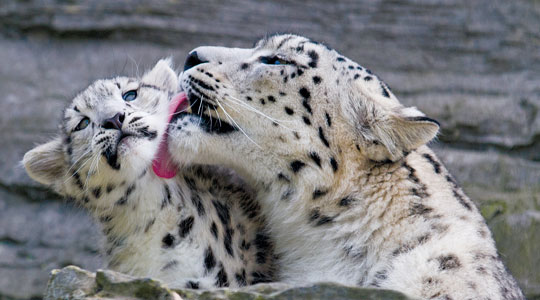The International Union for the Conservation of Nature (IUCN) on Thursday, September 14, 2017 announced that it is down-listing the snow leopard on the Red List of Threatened Species from “Endangered” to “Vulnerable” – the next lower category of risk. A “Vulnerable” listing on the Red List is still regarded as a major cause for concern though, with vulnerable species considered “to be facing a high risk of extinction in the wild.”

But the Snow Leopard Trust, the Seattle-based organisation that specialises in the conservation of the endangered snow leopard, has opposed the status change. According to the group, the best available science does not justify the status change, which they say could have serious consequences for the species.
In statement issued on Thursday, Snow Leopard Trust said: “The IUCN’s guidelines make it clear that any status assessment should follow a precautionary approach. If the best available data aren’t conclusive, no down-listing should be done.
“In the case of the snow leopard, less than 2% of the species’ range has ever been sampled for abundance using reliable techniques, and those data are biased toward high-density areas.
“The new assessment behind the status change of the snow leopard does not improve on this data and appears to use methodologies – such as asking people how many snow leopards they think exist in any area – that are not recognised as scientifically valid for estimating populations.
“In contrast, the latest information based on genetic and trap camera surveys from one of the range countries, i.e. Pakistan, where a large proportion of the habitat has been sampled, shows that the snow leopard population there could be as low as 40 cats, and is almost certainly lower than 100, compared to the earlier guesstimate of 200-420 cats. This varying data suggests that snow leopard populations in some parts of their habitat may be lower than assumed, and that more robust science is needed to ensure an accurate assessment before revising the status.
“In addition, demographic modeling based on the limited solid data that is available actually showed results in favor of an Endangered listing.
“Given these circumstances, and taking into account the growing threats to the snow leopard’s survival, we had argued for the status to remain Endangered, and will be calling on IUCN to revisit the decision through the appropriate channels.
“The potential consequences of an unwarranted down-listing could be very serious. In the last four years, range country governments have launched the Global Snow Leopard & Ecosystem Programme, the first range-wide initiative to protect these cats. There has never been as much political will or momentum to secure the snow leopard’s future. However, conservation action might become harder to justify politically if there is a belief that the cat’s situation has improved.
“We do know that the threats to snow leopard survival are growing. Climate change threatens two-thirds of snow leopard habitat. Snow leopard habitats are increasingly facing mining pressures. Illegal hunting, poaching, and retaliatory killing of snow leopards are on the rise in many areas. We are most concerned about how the lower status may weaken conservation efforts in range countries and the ability of local governments to stop these threats. Governments may have less support from some sectors of their society to create protected areas for snow leopards given the potential revised status. We have earlier successfully opposed plans to commercially hunt snow leopards for trophy, and we anticipate that these pressures will increase.
“In short, we think the status change is unjustified and detrimental to the conservation of the snow leopard. The snow leopard may not officially be listed as Endangered anymore, but there is no doubt that it very much remains in danger.”
The Snow Leopard Trust also conducts research and partners with communities as well as governments across snow leopard habitat to protect the cat.
